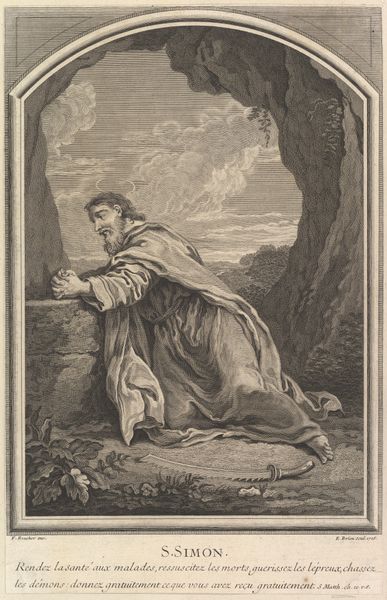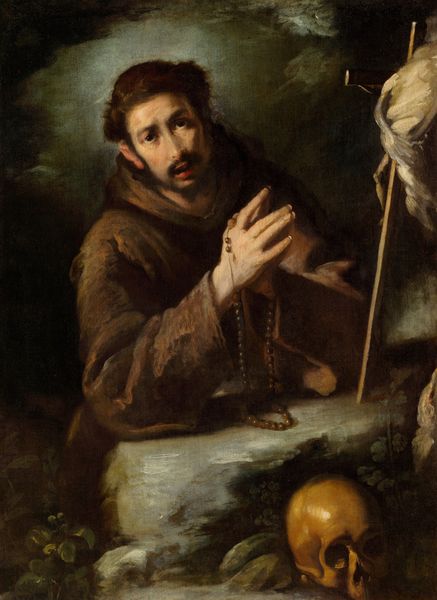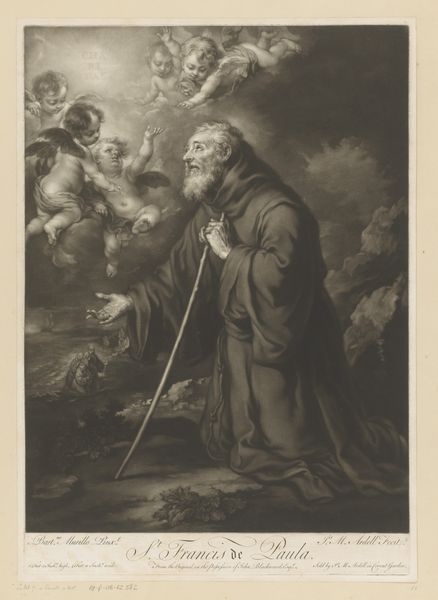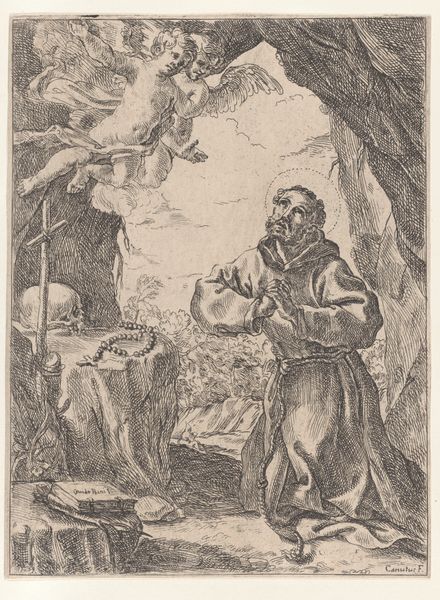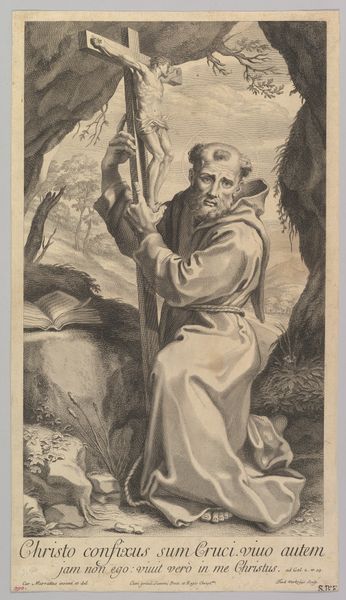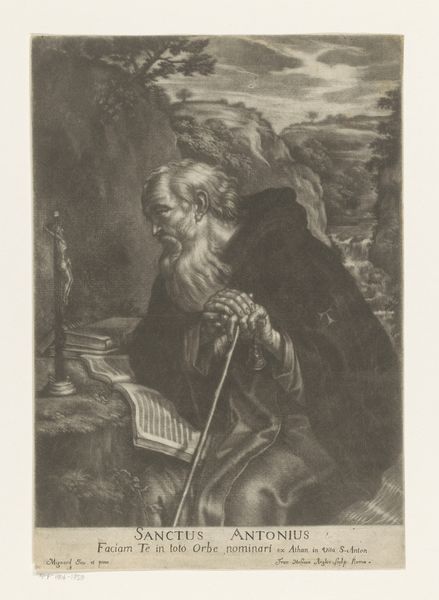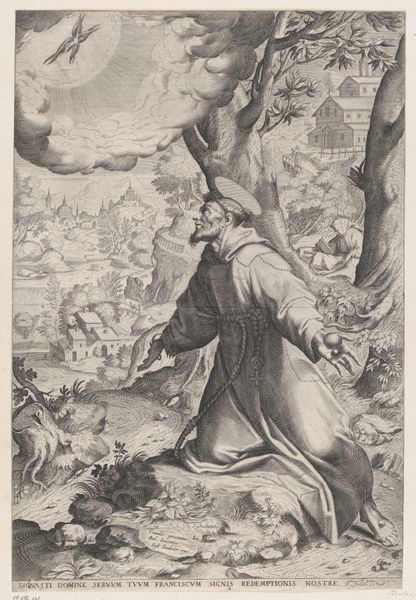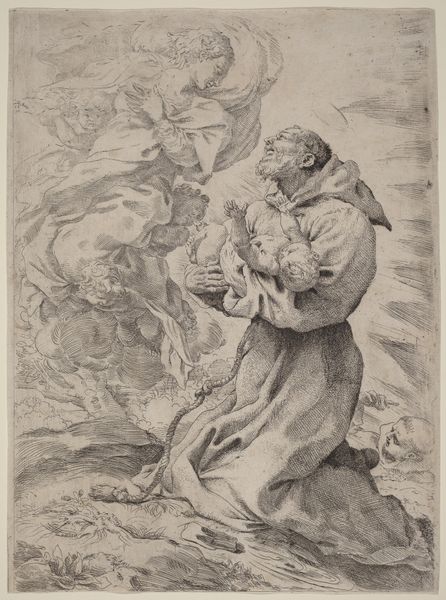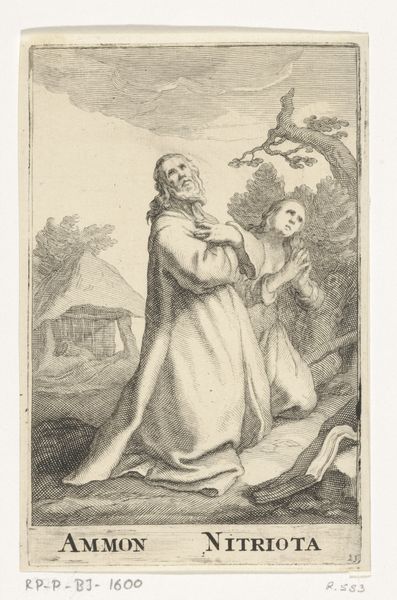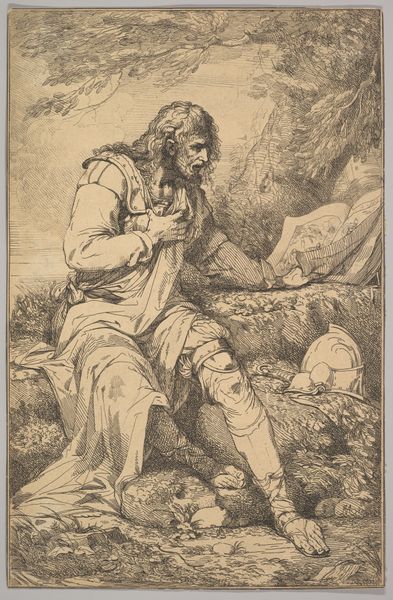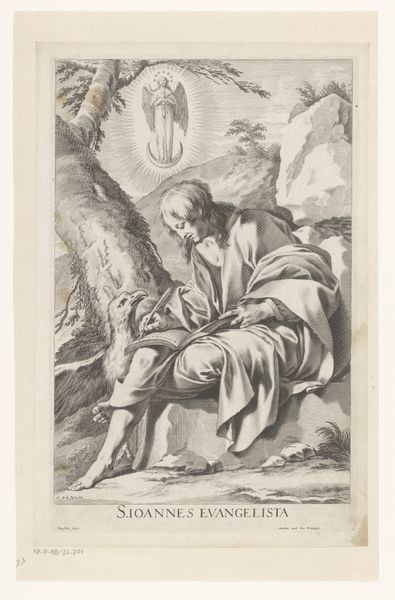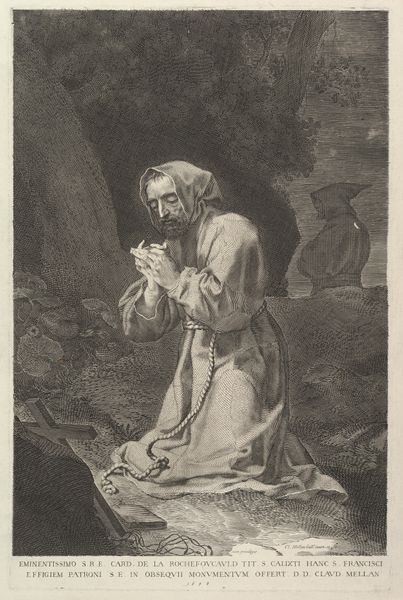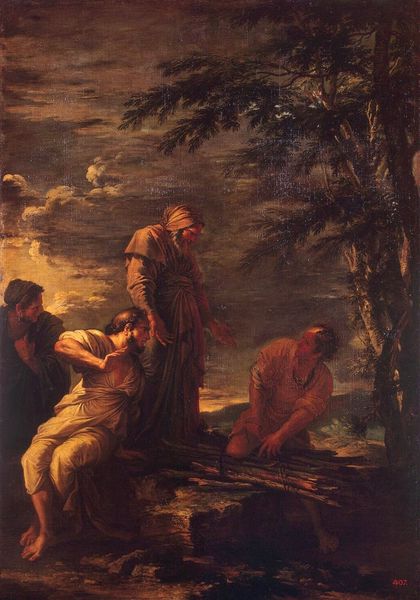
Saint Francis in Ecstasy 1645 - 1655
0:00
0:00
painting, oil-paint
#
baroque
#
painting
#
oil-paint
#
landscape
#
charcoal art
#
cross
#
chiaroscuro
#
history-painting
#
charcoal
Dimensions: 77 × 53 1/4 in. (195.6 × 135.3 cm)
Copyright: Public Domain
Curator: What strikes me immediately about "Saint Francis in Ecstasy" by Giovanni Benedetto Castiglione is its almost cinematic quality. The stark contrast, the way the light spills… it's a moment pulled straight from a dream, don't you think? Editor: Absolutely, and that chiaroscuro is intentional, of course, to enhance the dramatic, almost operatic feeling. Light is an old visual symbol, as divinity revealing truth, shining on Francis, while darkness always conceals what is base. This visual contrast intensifies Francis' religious experience by using traditional pictorial metaphors. Curator: Exactly! And the placement, right? Kneeling, almost swallowed by the landscape but tethered to it by this raw, wooden cross. Makes you think about faith as both this soaring experience and a grounded, very physical act. Look at the skull; a meditation on mortality sits right there as a bookend. Editor: The skull is an "everyman" symbol. *Memento Mori*: remember you must die. Throughout the Christian world and in many other traditions, too, it is the vanity of mortal concern juxtaposed to Francis’ focus on devotion and purity of spirit. Castiglione gives us the Saint's ultimate choice, not to give in to earthly vanity, but transcendence and devotion. Curator: Yes! You can see it on his face. It reminds me how sometimes, the greatest revelations come when we're knee-deep in the mess of life – nature growing all around with a book resting as part of it.. rather than in some sterile, removed setting. Castiglione found a perfect blend of Baroque drama. Editor: A key theme of Castiglione's time – intense emotions meant to provoke introspection. Consider how effective it is even now. The artist's ability to synthesize these emotionally charged symbols, using stark shadows and dramatic compositions, taps into an emotional well of mortality, the futility of earthly obsession, the devotion to hope, to transcend all worldly worries. Curator: It certainly does. Each symbol acting like an instrument. All orchestrated into an exquisite symphony. What a treat to linger here and contemplate how we all connect through symbols, even after all these centuries. Editor: Indeed. Looking closely at it, I feel encouraged to accept death as a part of life's cycle, giving me renewed strength to move forward in the acceptance that someday all is well, just not today.
Comments
No comments
Be the first to comment and join the conversation on the ultimate creative platform.
